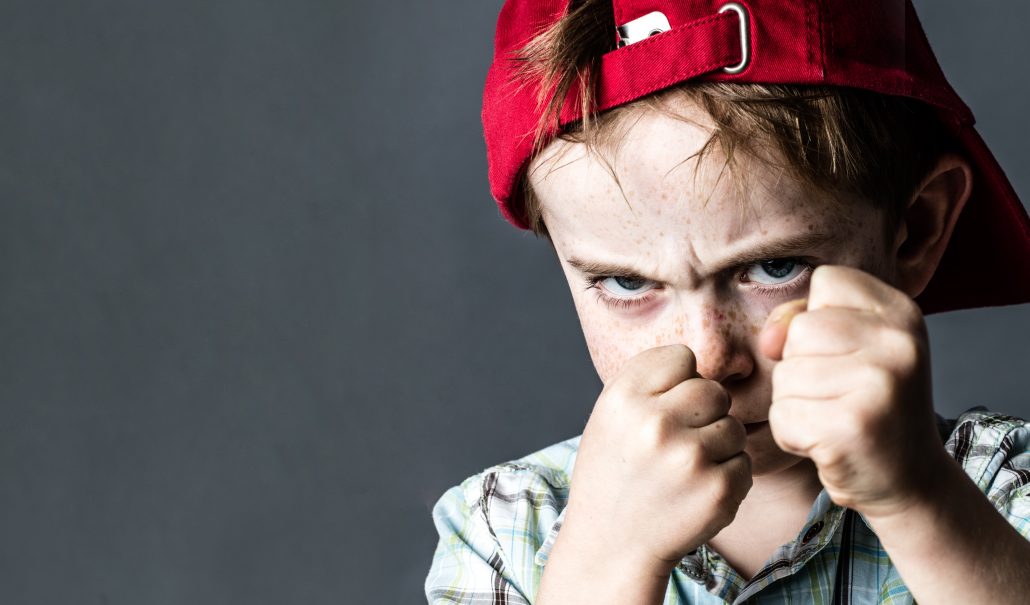by Justin Mckibben | Sep 13, 2018 | Coping Skills, Drug Abuse, Family, Mental Health, Parenting, Relationships

(This content is being used for illustrative purposes only; any person depicted in the content is a model)
Most people in the world would say that nothing is more important than family. They say that you can choose your friends, but family is forever. If you subscribe to the philosophy of blood being thicker than water, then it makes sense that when those closest to you suffer, you suffer right along with them. For many, this concept is never more painfully clear than when living with an addict in the family. Even though plenty of people struggling with addiction say they are only hurting themselves, most of us know that addiction is a family disease.
While there are many obvious ways that addiction affects a family, like domestic violence, financial troubles or death, there are also some more subtle consequences. When someone is suffering, their loved ones will often develop specific family roles for dealing with addiction. Depending on the household, and how the addiction manifests itself, some people may take on multiple roles in order to try and create a balance at home. However, many of these family roles can cause adverse effects of personal development over time.
Here are 6 family roles people use when coping with addicted loved ones.
-
The Victim
Addiction and its effects draw a lot of attention, so it may seem to the addict that the world revolves around them. They take on a victim mentality, often causing others in the family to feel the need to save them, or at least to avoid disturbing them.
The victim is central to all the other family roles that develop around it. As the roles are defined, the victims loved ones unconsciously take on other family roles to complete the balance after the problem has been introduced.
Although this person’s actions are the key to their own recovery and overcoming the victim mentality, it is important to remember they are not necessarily vital for a family to recover on its own.
-
The Hero
In the family, there will be someone who tries to be the champion for the victim and the family. This is someone who needs the family to look good, and they will work hard to make it so. The problem with the Hero is that they try to ignore the addiction and its effects. Instead, they want to dress everything up and act as if all is well.
The Hero will present things in a positive manner as if the family roles don’t actually exist. They are often perfectionists and overachievers, who seek to unite the family and offer hope through their own accomplishments. But taking on all this pressure can cause a lot of stress and anxiety for this family member. Very often this is the child of an addict or alcoholic.
If the Hero is able to finally overcome this role, they can ultimately play a crucial part in the addiction recovery process, both for the individual and for the family.
-
The Mascot
The Mascot’s is often thought of as the comic relief. This is the member of the family who uses humor as a defense mechanism and a distraction tactic. They try to soften the impact of an addicts behavior or ease tensions between family roles through laughter.
On the bright side, the Mascot does bring humor to the family roles people use for coping with addicted loved ones. They have a talent for making others feel better, even in the worst situations. But ultimately, they are also people-pleasers to a fault, which can foster feelings of anxiety.
However, Mascots sometimes make inappropriate jokes about other family members or situations, which can causes friction. They also run the risk of avoiding their own feelings or being inconsiderate of the feelings of others. Sometimes their harmful humor can hinder addiction recovery.
Also, the Mascot is likely to self-medicate as they grow up, perpetuating the cycle of addiction.
-
The Lost Child
In every family that deals with an addicted loved one, there is usually someone who tries their best to disappear. They are silent, withdrawn, and avoid drawing much attention to themselves from other members of the family. This is the Lost Child.
The Lost Child is typically careful to not make problems. They avoid any kind of conflict, along with conversations regarding the addiction or the underlying family roles that take shape around the victim.
The Lost Child will spend as much time as possible in isolation or away from their family. They are the child who sits in their room playing video games or watching TV for hours without any interaction. The Lost Child will often develop feelings of neglect and resentment, which can lead to depression. They often grow up to have a very difficult time developing healthy relationships later in life.
-
The Scapegoat
The Scapegoat is a problem child. Usually, this is the black sheep of the family who often acts out in front of others. They take on this role, knowingly or subconsciously, to divert attention from the person who is addicted. They rebel home, get in trouble at school, make a lot of noise to mask the underlying issues in the family. Male scapegoats are often prone to violence, while female scapegoats frequently act out sexually.
This person may even adopt substance use in order to run interference for a parent or sibling. They may develop other issues as well, such as eating disorders or a tendency to self-harm.
The Scapegoat covers or draws attention away from the real problem. They grapple with feelings or anger and shame, and they often offer the other family roles a sense of purpose- being someone to watch out for or try to fix.
-
The Enabler
The Enabler is also commonly referred to as the Caretaker but is always the person who makes all the other family roles possible. Most often this is a spouse, but it can also be a child of an addict.
Caretakers will take it upon themselves to keep everyone happy, believing it is the best way to protect the family. Their mission is to maintain balance in order to make the family look good on the outside. They are notorious for minimizing the addiction, making excuses for all behaviors and actions. They have a knack for blaming everything on something else, without acknowledging the real problem.
This person protects the addict from consequences, while constantly cleaning up after their messes.
Additionally, the Enabler frequently embraces the other family roles when they are convenient for maintaining the family balance. They will laugh at the Mascots harmful jokes, or adamantly put the focus on the Hero’s achievements. They will support the Lost Child’s “independence”, and run interference for the Scapegoat, all while catering to and caring for the needs of the victim.
Functional Dysfunction
At the end of the day, the family roles people adopt as part of coping with an addicted loved one are a kind of functional dysfunction. It is a system that people create in order to survive situations at home that can be toxic and unpredictable. Human beings by nature will behave in accordance with their surroundings. Out of self-preservation, we will get used to unhealthy strategies for dealing with unhealthy relationships. Even if they are not effective, if they help us get by there is a lot of damaging stuff we will get used to.
All of these family roles demonstrate how important it is for families to be supported and involved in a loved one’s recovery from addiction. Because we can see how addiction impacts the family, we know that the family also needs help in overcoming those adversities. Having a recovery program designed specifically for family members and loved ones of people with addiction can make all the difference. Not only does it help the family support their loved one, but it helps the family recover on its own. Family can also play a very important role in relapse prevention. It teaches them what their loved ones may experience during the medical detox phase of treatment. It helps them better understand the science of addiction and the process of recovery, while also showing them how their own behaviors have an impact.
The Palm Healthcare Family Program is all about helping the family come together to face addiction and overcome all the unique challenges that come with it. If you or someone you love is struggling with addiction, please call toll-free now. You are not alone. We want to help your family be stronger together.
CALL NOW 1-888-922-5398
by staff | Aug 16, 2018 | Family, Mental Health, Recovery, Relationships, Self Improvement, Sobriety

(This content is being used for illustrative purposes only; any person depicted in the content is a model)
By: Thomas G. Beley, PhD, LCSW
There is a German fable that states that relationships are like two porcupines trying to keep warm in the dead of winter. Move in too close, or too quickly, in the anticipation of feeling the warmth, chances are the porcupines are going to experience some discomfort and pain from their respective ill-positioned quills. Yet, being afraid of getting too close to each other, the porcupines are likely to run the risk of dying from the winter cold.
As individuals, our relationships are not too different than the porcupines. Whether it is with family, friends, co-workers or strangers, we are constantly in a natural process of trying to determine just how close we need to be with someone while at the same time not sacrificing our own individual beliefs, values, or needs. It is the negotiation of these two natural forces of individuality and togetherness that determines the success of any relationship. Too much of either or an imbalance can have unsettling effects.
It is important to understand that individuals are subject to an inherent process of trying to reach a successful balance between these two natural forces. Research has shown that this is a process rooted in nature and all living organisms. Being a part of all life means we have the desire to be our own person yet at the same time desire the safety and security of the group.
Finding Balanced Relationships
In humans, this process happens both consciously and unconsciously. We seek out relationships that will give us both the opportunity to pursue our own individual needs while at the same time involve ourselves in a relationship that is nurturing and comforting. Our behavior, whether good, bad, or indifferent, is often influenced by these forces of nature of trying to find that right balance between one’s need for individuality and togetherness. The successful balance of these two life forces is what brings us a sense of well being and contentment. It is our ability to maintain this delicate balance between individuality and togetherness that determines the quality of any given relationship.
It is also important to note, here, that the quest for individuality or togetherness is not to say that one is more important than the other. They are both extremely critical. However, it is how a person balances these two forces within their life and the relationship systems in place that makes the difference between staying calm and collected and being in a state of turmoil and conflict.
Relationship conflicts often occur when there is an imbalance in these two natural forces. Imbalances can occur both within the individual and within the relationship system itself. A common scenario that often develops is when one person within the relationship system desires more individuality and the other person in the relationship system desires more togetherness and closeness. As is often the case, one person begins to feel overwhelmed in the relationship while the other person may feel neglected. Typically, the person desiring more individuality is running away from the relationship system while the person seeking more closeness is chasing the relationship system.
The Dance of Conflict
This “dance” can occur in a variety of ways. One such way is when an individual requires an excessive amount of one or the other. Too much of an individuality influence may make it difficult for that person to make a meaningful connection with others, particularly those who desire more closeness and togetherness. In that desire to achieve a sense of individuality, a person can easily cut him or herself off from others. Along the same lines, a person with a high degree of individuality may find others having a difficult time making a meaningful connection with him or her. The same holds true for the person needing a great deal of togetherness. The desire to achieve closeness can result in the person becoming excessively dependent on others or not maximizing their own individual potential.
Another common scenario that is when one person desires individuality and the other person is requiring a sense of togetherness. A person who requires a sense of individuality will likely create a conflict in the relationship system of the person who has the desire to achieve more togetherness. The same dilemma holds true if two people have inordinate amounts of the same needs. Two people desiring a great deal of individuality will likely experience the cold of winter. Two people desiring a great deal of togetherness will likely feel the quills of another person. When there is an imbalance of these needs, anxiety occurs and the potential for conflict exists.
Find What Matters
It is important to emphasize that there is no magic formula that constitutes what is the right amount of togetherness or individuality within a relationship system. What truly matters is how a person manages their respective needs and the awareness of the needs of the other within the relationship system.
Doctor Thomas G. Beley, Ph.D., LCSW is the Executive Director of Palm Healthcare Company. For over 25 years, Doctor Beley has worked in the field of substance use disorder and mental health disorders. Through the years of helping people who struggle with drugs, alcohol and mental health issues, Doctor Beley has proven to be an expert clinician and an innovative and compassionate leader in the treatment industry. Palm Healthcare Company is grateful to have an executive team with experience and incredible commitment to helping others. If you or someone you love is struggling, please call toll-free now. We want to help.
CALL NOW 1-888-922-5398
by Justin Mckibben | Jul 31, 2018 | Addiction, Addiction Treatment, Coping Skills, Family, Mental Health, Parenting

(This content is being used for illustrative purposes only; any person depicted in the content is a model)
One of the most harmful myths about alcoholism that needs to be debunked is the idea that drinking does not affect anyone but the individual. People tend to be self-centered when lost in their cups, and so many believe the only person who has to deal with their drinking problem is them. No one else has to spend the money, or feel the hangover, or suffer the consequences… right?
But we know this isn’t true. The behavior of an alcoholic or a drug addict impacts others, especially the people closest to them. An alcoholics family can experience a great deal of pain and carry plenty of consequences as the result of their loved one’s drinking.
However, none are as vulnerable as the children of alcoholics. Frequently, the impact of parental alcoholism on a child can last the rest of that child’s life. Even as children, they may do their best to conceal the effects at the time, but one way or another it always leaves a mark. Here are just some of the ways that parental alcoholism affects children.
-
Low Self-Worth
One way parental alcoholism affects children is by creating a lot of self-doubt and self-criticism in many children. Often, the children of alcoholics believe their own shortcomings are the cause of disturbances in the home. This can lead them to be extremely critical of themselves. They may believe they are not good enough, and frequently develop low self-worth and low self-esteem.
Even as adults, the children of alcoholics can feel inadequate.
Over time, the tendency to doubt themselves and be so critical can lead to other issues, including depression and anxiety disorders. Parental alcoholism can lead a young child to feel like they are unworthy or responsible for more than is actually under their control.
-
Fear or Abandonment
In most cases of parental alcoholism, the parent is emotionally unavailable or even physically not around. Sometimes a parent will be asked to leave due to their drinking by the other parent. Other times, the parent will get in trouble with the law and may go in and out of institutions. In some cases an alcoholic parent will have to be hospitalized, or even worse, they pass away.
All of these circumstances can lead the child of an alcoholic to develop a deep fear of being abandoned. Losing a parent, even if only periodically, can be devastating for young children.
-
People Pleasing
When a child has developed low self-worth, is extremely critical of themselves and has a fear of being abandoned, it only makes sense that they will constantly seek approval from others. Growing up in a house with parental alcoholism as the norm, a child always trying to make others happier will become a people-pleasing adult.
This can be especially true if a child’s alcoholic parent was mean or abusive when they were drunk. It can intensify the fear of not being enough, or of being abandoned. As an adult, the children of alcoholics can grow up with a fear of confrontation. They may spend their lives avoiding any form of conflict. Furthermore, a child of an alcoholic might even sacrifice their own well-being in order to avoid making others angry.
Sadly, with people pleasing a child will learn to suppress their own emotions, making them an emotionally stunted adult.
-
Overcompensating
Sometimes, the child of an alcoholic is so committed to people pleasing that they become a perfectionist. Parental alcoholism can cause a kid to become incredibly responsible, hoping to gain some control of the world around them. These children of alcoholic parents become overachievers or workaholics.
However, there is no guarantee that they will not try to overcompensate in the opposite direction. An alcoholic’s child may also become very irresponsible members of society. They may adopt a self-destructive lifestyle similar to their parents in order to try and escape the pressures of an alcoholic home. Thus, the cycle continues.
-
Normalizing
If parental alcoholism has played a key role in the household, it is hard for a child to determine what “normal” is. This inability to distinguish the good from the bad makes it much more difficult for children to decide which role models to follow. Not only that, it makes it hard to know the right way to treat other people.
If you grow up in a home where abuse and alcoholism are normal, you are likely to engage in that behavior and seek out relationships like that later on in life. By normalizing the harmful behaviors and the toxic relationships that a child of an alcoholic can be exposed to, they are also building a faulty foundation for future relationships.
-
Difficulty with Relationships
When growing up with parental alcoholism in the home, kids will experience things like:
Sadly, they may accept that these things are all normal. Thus, these children can develop severe trust issues. If you have grown up developing serious trust issues and/or a lack of self-worth, getting close to anyone can seem almost impossible.
In order to be intimate with others, you have to rely on others for emotional attachment, fulfillment, and interdependence. These things can be very hard to reconcile for the child of an alcoholic home. And if you are so critical of yourself, a strong fear of abandonment will definitely be very hard to overcome when trying to build relationships. Pretty much every issue we mentioned before this point makes it extremely difficult for these children to have healthy relationships.
Overcoming Parental Alcoholism
In truth, there are innumerable ways that parental alcoholism could affect a child. Because we are always trying to figure out what things mean as children, we could adopt completely different ideas based on a variety of experiences. Some people are more sensitive to certain kinds of problems, while others may use their bad experiences as motivation to set better standards for themselves. In short, not all children of alcoholics will be affected the same.
However, many of the issues on this list appear consistently in studies of adult children of alcoholics. For years, these are some of the most common characteristics identified in research on the families of alcoholics. Regardless, one thing remains the same- parental alcoholism can significantly influence a child’s development. Time and time again, we can see how the impact of growing up with parental alcoholism can shape an adult.
A large proportion of the people who seek help for substance use disorders like alcoholism or drug addiction have kids. Sadly, a large number of parents do not seek help because they are afraid of being away from their children. Some even worry they may lose their children. Still, every year countless children lose their parents to alcohol and drug use. That is why it is so important that parents and caregivers receive comprehensive and compassionate support in holistic addiction treatment.
If you or a loved one is looking for treatment, make sure the program you choose has ways for the family to be involved in the recovery process. Not only is it good for helping people understand what their families go through, but they also teach families about what the suffering individual goes through.
Treatment for alcoholism or addiction is not about taking families apart, but about bringing them together.
Palm Healthcare Company believes in uniting loved ones through the practice of healing mind, body and spirit. Our holistic addiction treatment program gives each individual an opportunity to create a personalized recovery plan that helps them to overcome their addiction and get back to what matters most. If you or someone you love is struggling, please call toll-free now.
CALL NOW 1-888-922-5398
by staff | May 2, 2018 | Addiction, Addiction Stigma, Bullying, Coping Skills, Depression, Family, Mental Health, Mental Health Stigma, Mood Disorders, Parenting, Post-traumatic Stress Disorder, Stigma

(This content is being used for illustrative purposes only; any person depicted in the content is a model)
Bullying is a concept we are all familiar with. We each experience bullying at some point in life, to one extent or another. Even those who become bullies have often been bullied at some point. Technology and social media have created a whole new breed of cyberbullying, and too many people don’t take bullying very seriously. When you look at bullying statistics, the impact can lead to other real issues, including substance abuse and addiction.
To be a Bully
Firstly, let us look at what it is to be a bully. The title is typically described as the use of superior strength or influence to intimidate, typically to force someone to do what one wants. The site stopbullying.gov defines it as unwanted, aggressive behavior that involves real or perceived power imbalance. This behavior is repeated or has the potential to be repeated over time. It also concludes that both those who are bullied and those who bully often have serious, lasting problems.
Bullying statistics show three categories of behavior:
1. Verbal Bullying
This type of bullying is about the things we say or write. Verbal bullying includes:
- Teasing
- Name-calling
- Inappropriate sexual comments
- Taunting
- Threatening
2. Social Bullying
This involves hurting someone’s reputation or relationships. Social bullying includes:
- Leaving someone out on purpose
- Telling other children not to be friends with someone
- Spreading rumors about someone
- Embarrassing someone in public
3. Physical Bullying
Physical Bullying involves hurting a person’s body or possessions. It includes:
- Hitting/kicking
- Pinching
- Tripping
- Pushing
- Spitting
- Taking or breaking someone’s things
- Making mean or rude hand gestures
Sadly, the prevalence of bullying often convinces people that it is just a rite of passage. A lot of people don’t take the issue seriously enough. Adults often justify the behavior as a sign of immaturity, without realizing the genuine harm that comes from it.
The Impact of Bullying
Being bullied can lead to many other adversities in life, including physical violence and mental health problems.
Because both behaviors are so common, it is difficult to correlate bullying and substance use. When looking at addiction and bullying statistics, according to 2016 Monitoring the Future survey:
- More than 17% of children have tried drugs by 8th grade
- Almost 50% have used illicit drugs by senior year in high school
- Childhood alcohol use rates are even higher
According to the CDC’s 2015 Youth Risk Behavior Survey:
- 20% of American high schoolers have been bullied in school in the past year
- More than 15% have been bullied electronically in the past year
Bullying can erode a child’s self-esteem. It can deplete their confidence, even for those who parents may believe are confident enough to endure a bully. Over time, they learn to question their self-worth. If a bully targets a specific attribute of the individual, they may begin to obsess over it.Some bullying statistics show that those who have been bullied are six times more likely to be diagnosed with mental health issues. It is extremely common for victims of bullying to develop progressive behavioral disorders such as:
Over time, they may turn to alcohol or drugs to ease the pain. Also, the desire to fit in and feel accepted can lead a child using drugs to connect with people. Several studies show the risk factors for psychological health problems, substance abuse, and bullying statistics often overlap.
Similarity in Symptoms
When we look closer at bullying statistics and at the warning signs of substance abuse, we find that the symptoms are extremely similar.
Common Symptoms of Bullying
- Depression
- Anxiety
- Changes in sleep patterns
- Changes in eating habits
- Eating disorders
- Poor performance in school or work
- Loss of interest in activities
- Alcohol or drug use
Common Symptoms of Substance Use Disorder
- Mood swings
- Poor performance in school or work
- Depression
- Anxiety
- Insomnia
- Withdrawal from social activities
- Health problems
Looking at some of the more general warning signs we can see how many are present concerning both issues.
Substances and Bullying Statistics
Ultimately, drugs can become a crutch for numbing the emotional pain of being bullied. While it is harder to predict whether being the victim of bullying will lead to substance abuse, with bullies there is also a very real risk of developing issues with drug use and addiction.
Bullying statistics often show that bullies themselves typically suffer from a variety of emotional and behavioral challenges. Sometimes a child lives in a home with domestic violence, and so they become aggressive with their peers to expel their frustration. Yet, they may still use drugs or alcohol to escape the painful life at home. Even the act of bullying itself is typically an indication of diminished self-worth, and just like with the victims, that lack of self-worth can lead them to use drugs.
Some even believe bullying could be comparable to an addiction itself. Some psychologists compare bullying to other ‘process addictions’ like gambling, overworking or shopping. While we do not recognize bullying as an addiction, many believe the comparison could be helpful to address the issue.
Compassion and Care
Whether or not someone is a victim or bullying, or has been a bully themselves, we all deserve respect and compassion. When it comes to providing care for those who struggle with substance use disorder, it should always be a priority to help people develop healthy coping skills, while gaining self-worth. As people struggle to deal with emotional and behavioral challenges, there should be resources there to help guide them toward personal development. Not just getting off of substances, but also to empower them as an individual.
One issue we have with facing bullying head-on is that people typically think of a “bully” as someone inherently bad. However, life is not so simple. A child who bullies isn’t a bad child, they are just interacting with their world in an unhealthy and aggressive way. They still deserve understanding and support.
We commonly see the same stigma with people struggling with addiction. Too often they are labeled as “bad” people, but the truth is that they are just dealing with things in a self-destructive and unhealthy way. Dealing with substance use disorder and with bullying means meeting it with love and care, not judgment and punishment.
Perhaps if focus more on supporting people, we have a better chance of changing addiction and bullying statistics for the betterment of everyone.
Palm Healthcare Company believes in the importance of compassionate and comprehensive care for those struggling with substance abuse and addiction. Providing a safe medical detox, a personalized recovery program and an innovative approach to holistic health, our mission is to help people transform into the person they want to be. If you or someone you love is struggling, please call toll-free now.
CALL NOW 1-888-922-5398
by Justin Mckibben | Jan 3, 2018 | Addiction, Addiction Treatment, Donald Trump, Drug Abuse, Drug Policy, Dual Diagnosis, Family, Fentanyl, Inpatient Treatment, Law Enforcement, Mental Health, News, PAARI, Prescription Drugs, Professionals, Recovery, Sobriety, Stigma, Synthetic Drugs

With the beginning of the new year, Palm Healthcare Company is looking forward to helping spread more exciting stories of experience, strength, and hope while also sharing important news stories and exciting new developments that relate to the world of addiction recovery and substance use disorder treatment. As we commit ourselves to another year of fighting alongside thousands of people working toward a better future, we would also like to take some time looking back on all the big moments in 2017 that we shared with our Palm Healthcare Company Blog.
-
President Trump Declares Public Health Emergency: What’s the Plan?

October of 2017, President Donald Trump made an announcement declaring the opioid crisis in America as a Public Health Emergency. This highly anticipated declaration was delivered in a way slightly different than many had expected, noting the technical differences between a Public Health Emergency and a National Emergency.
Many advocates were concerned that this announcement did not provide a concrete foundation for the necessary federal funding and did not initiate much-needed action, but others we assured that this means the Trump administration was taking this issue very seriously. In this article, we took a look at what this announcement did actually accomplish, and what it failed to deliver on.
-
Racketeering for Fentanyl: Opioid Maker Insys Founder Arrested for Bribes

A huge development to another story came in late 2017 when John Kapoor, former CEO of Insys Therapeutics and founding father of one of the most prominent opioid manufacturers in the country, was arrested and charged with conspiring to push the signature drug of Insys Therapeutics, a Fentanyl spray called Subsys, for unacceptable uses through bribes and kickbacks.
The Palm Healthcare Company blog notes how back in 2016 the Justice Department reported to be charging 6 former executives and sales-managers of Insys Therapeutics for conspiring to defraud health insurers.
When looking at the details in this story, it has intensified the conversation about Big Pharma involvement in the epidemic
-
Can Kellyanne Conway Really Compete with the Opioid Crisis?

Not too long after President Trump’s declaration of a Public Health Emergency pertaining to the opioid crisis, Kellyanne Conway was announced as leading the charge on the White House’s efforts for addressing the opioid epidemic.
This Palm Healthcare Company blog saw a lot of comments!
While some find that having a high-profile figure at the head of the efforts gives validity to the White House’s commitment to solving the opioid issue in America, many others are speaking out in frustration. Those in opposition to this appointment say that while she may be useful as a counselor or pollster, she has no experience of expertise when it comes to drug abuse, addiction or substance use disorder treatment.
Thus far the one thing both Kellyanne and the President seem adamant about is a media campaign, but advocates are still afraid this is more “Just Say No” and not enough support for effective resources.
-
After Las Vegas Shooting: PTSD and Mental Health Must be Priority

In early October of 2016, the nation was shaken to its core when Las Vegas had one of the deadliest shootings in modern American history. This horrific tragedy flooded newsrooms and live viral footage with the country watching in shock as a gunman killed 58 people and injured 546 more at an outdoor music festival.
In the aftermath of this terrible and heartbreaking incident, our Palm Healthcare Company blog took a look at how such traumatic experiences impact people, and about the importance of those who struggle with Post-traumatic Stress Disorder (PTSD) getting proper diagnosis and care.
At a time when so many people are self-medicating with dangerous or even deadly narcotics, it is important to care for those most vulnerable, especially after such an earth-shattering experience.
-
Police Helping Addicts into Treatment is a Growing Trend Saving Lives

In August of 2017, we took a look back at several programs that had come to light all over the country based on Police Departments working with their communities to offer drug users the chance to get help with addiction treatment instead of being arrested and charged.
The pioneering program came from Gloucester Police Department in Massachusetts back in 2015. This program allowed users to ask police for help, and told addicts they could submit drugs to local law enforcement without fear of being arrested if they were willing to seek treatment. A 2016 study showed that this program was experiencing some impressive success.
Police departments in a number of other states were inspired by this and took up similar programs as a way to help their communities fight the addiction outbreak.
The Palm Healthcare Company blog took a close look at a handful of these programs to celebrate their compassion and success.
-
Sterilized for Cash: This Woman Pays Drug Addicts to Not Have Kids

Pregnant lady’s stomach and her hand holding dollar over black background
When we posted this Palm Healthcare Company blog we saw a great deal of debate in the comments on our Facebook. For over 20 years, Barbara Harris has driven across the country using cash to ask addicted women to give up their fertility. To date, the organization has paid over 7,000 people.
The controversy around such a powerful story had some people showing a great deal of support for someone giving addicted women an incentive to not get pregnant, while other people were appalled and angered that someone would entice desperate women who are not in the right mindset to make such dramatic and life-altering decisions with their bodies.
-
What Chester Bennington Taught Us about Addiction and Depression

(This content is being used for illustrative purposes only; any person depicted in the content is a model)
In July of 2017, the world lost a great artist and inspirational musician with the death of Chester Bennington, the lead singer of the band Linkin Park.
Initial reports were that Bennington had died from suicide by hanging, with later reports indicating that Chester had been drinking at the time of his death. The vocalist had been open about his struggles with depression and drug addiction over the years, and in this article, we took a look at just how much Chester Bennington could teach us about the devastation of depression and addiction.
-
Dear Media, Thank You for Bad Press

South Florida has been under a great deal of scrutiny recently, specifically concerning the issues facing the recovery community such as unethical and illegitimate sober home operators in the area. In June, there was a Megyn Kelly NBC News Investigation which focused in on Delray Beach, Florida and some of the big problems concerning unscrupulous activities from corrupt individuals exploiting drug addicts in need of help.
We took this time to look over some of the bigger stories concerning the illicit activities in South Florida with the recovery industry while showing support and gratitude for all those working together to try and put an end to operators who are taking advantage of people in need of help.
-
Palm Healthcare Measures Up to Addiction Treatment Outline for EAP

In September of 2017, we took a very close look at an article written by the Journal of Employee Assistance that was designed to help Employee Assistance Programs (EAPs) find the right kind of addiction treatment programs to recommend to their clients.
The outline given for EAPs to find effective and reliable addiction treatment options gives a list of things to look for. The Palm Healthcare Company blog was happy to show off just how all of our facilities measure up to these crucial standards.
Keep an Eye Out for More
Palm Healthcare Company continues to try and share every treatment development, news story or exciting innovation on our blog to not only help more people learn and raise awareness but to offer some perspective and maybe ask some new questions.
Whether it is sports, celebrities, news or politics we are committed to talking about important stories that pertain to drug policy in America, substance use disorder, mental health, and personal wellness. We will continue to touch on the top stories of 2018 to spread the word and hopefully inspire more people to get involved in these crucial conversations.
2017 was an intense, innovative and inspiring year. Here is to hope for 2018.
Holistic addiction treatment means incorporating every aspect of life for each individual with personalized opportunities for lasting recovery. So every bit of information can help anyone make a more comprehensive decision about what kind of recovery plan they want. If you or someone you love is struggling, please call toll-free now.
CALL NOW 1-888-922-5398
by Justin Mckibben | Dec 24, 2017 | Alcoholics Anonymous, Christmas, Coping Skills, Family, Holiday, Recovery, Self Improvement, Sober Fun, Sobriety

(This content is being used for illustrative purposes only; any person depicted in the content is a model)
Ladies and gentlemen, we have made it to the 12th Step of Christmas!
Those total lords have been jumping all around, the maids have stopped milking and are dancing with the other ladies. All the beautiful birds are flying around like crazy… but we have been waiting for the bass drop… BOOM! In comes the 12 drummers, and I mean they come in like the Ohio State Marching Band, just killin it!
Still don’t know why your true love brought so many birds, but hey it’s a party.
So to follow the classice sense of the song, we are going to rehash the other 12 Steps of Christmas for our final thought.
1. Admitting that I am powerless over the Holidays and they can make my life unmanageable.
2. Came to believe a Power Greater than myself could restore my holiday cheer
3. Made a decision to turn your Holiday over to the care of your Higher Power.
4. Made a Searching and Fearless Christmas List.
5. Admit to ourselves and another human when we are being a Grinch.
6. Become entirely ready to let go of the Ba Humbug.
7. Humbly asked our Higher Power to remove our shortcomings of holiday spirit.
8. Made a naughty list and checked myself twice; became willing to make amends and be nice.
9. Made amends when it wouldn’t ruin someone else’s Christmas.
10. Continued trying to stay off the naughty list, and when we are naughty we promptly get jolly.
11. Seek more of the Christmas spirit with through prayer or meditation.
And finally….
Step 12: Carry the Christmas Spirit to others in all our affairs
This is what it is all about, really. This is why Christmas is such a beloved and cherished holiday for so many around the world. Without trying to take anything away from the vital role that religious faith plays in it for many, the spirit of Christmas is about sharing peace and love, goodwill toward others, compassion and connection.
We have talked about all of this through every step of the 12 Steps of Christmas. That is because love, peace, compassion, connection are all in the spirit of Christmas AND in the spirit of the 12 Steps of recovery. It isn’t hard to draw this relationship because at the core they give us inspiration and hope to build a better life, with fulfilled relationships and meaningful purpose.
In the 12th Step of most recovery fellowships they put a lot of emphasis on carrying the message of recovery. In Step 12 of Christmas let us say we can use the same idea; spread that love and connection to everyone. Of course there is the literal giving of gifts during Christmas when we try to bring joy to others with materials, but in the end these are just an offering or a gesture by which we communicate that love and connection to them.
It is just one way we give of ourselves to spread the love.
Practice the Christmas spirit in all things…
The truth is too often we forget that these attitudes and practices are not just meant to be done on the holidays. Too many people forget about acceptance, willingness and openness when the sleigh bells have come and gone. Many will make strong resolutions for the New Year, but few will remember to carry these principles on with them. Those who work the 12 Steps in recovery are actually very fortunate to have a program that provides a consistent practice of compassion and growth.
The 12 Steps remind us of the importance of self-awareness, reflection, humility and selfless action. They give us an outline for personal development while helping us try to mend damage done in active addiction.
So even if you are not in recovery from drugs or alcohol, you can learn a lot about yourself and about your impact on the people who matter most to you. Doing things like taking inventory, addressing your character defects and helping others is really just a path toward spreading the cheer, joy, love and connection that Christmas gives us.
This year, try to carry the spirit of Christmas in all things. Try to remind yourself to make every day count; to move away from the attitudes that hold you back and toward the wish list of a sober and fulfilled life.
Keep the Christmas party alive every day. Hey, you can even keep partrige. He’s not such a bad bird anyway.
Merry Christmas. Happy Holidays.
Remember, this time of year the best gift you can ever give is yourself. For those who suffering from addiction, that means the opportunity for a life of recovery. If you or a loved one is struggling with substance abuse or addiction, please call toll-free now.
CALL NOW 1-888-922-5398
















